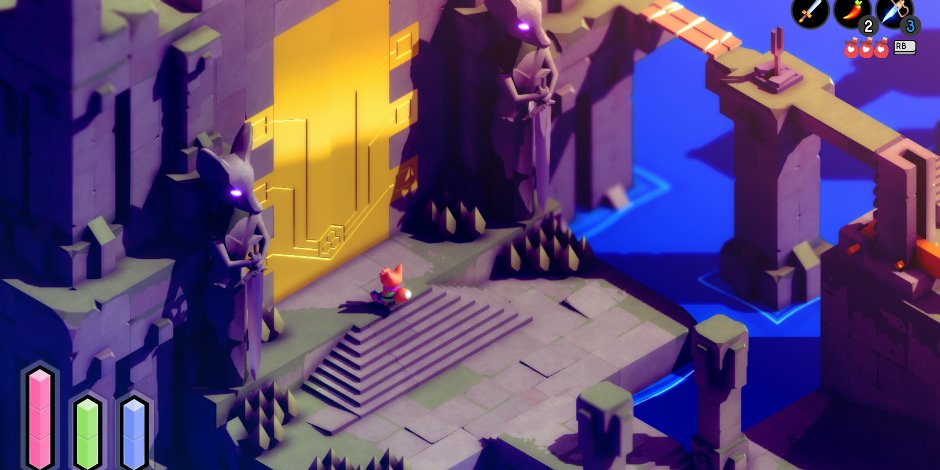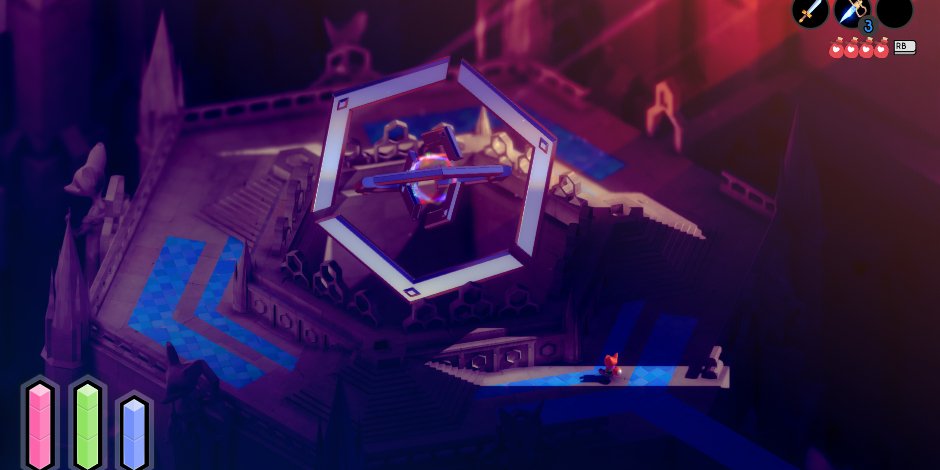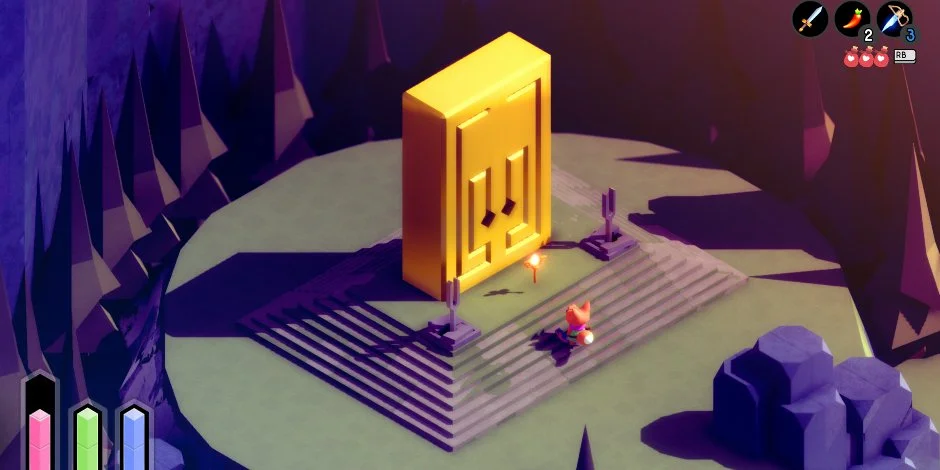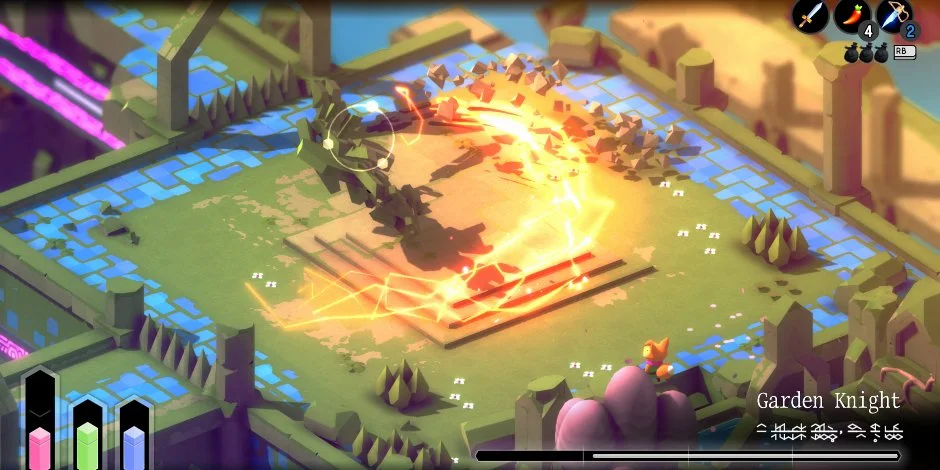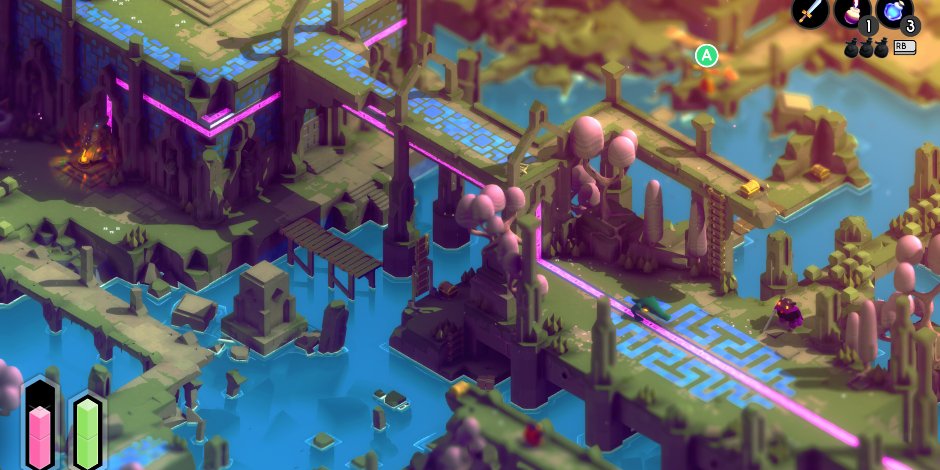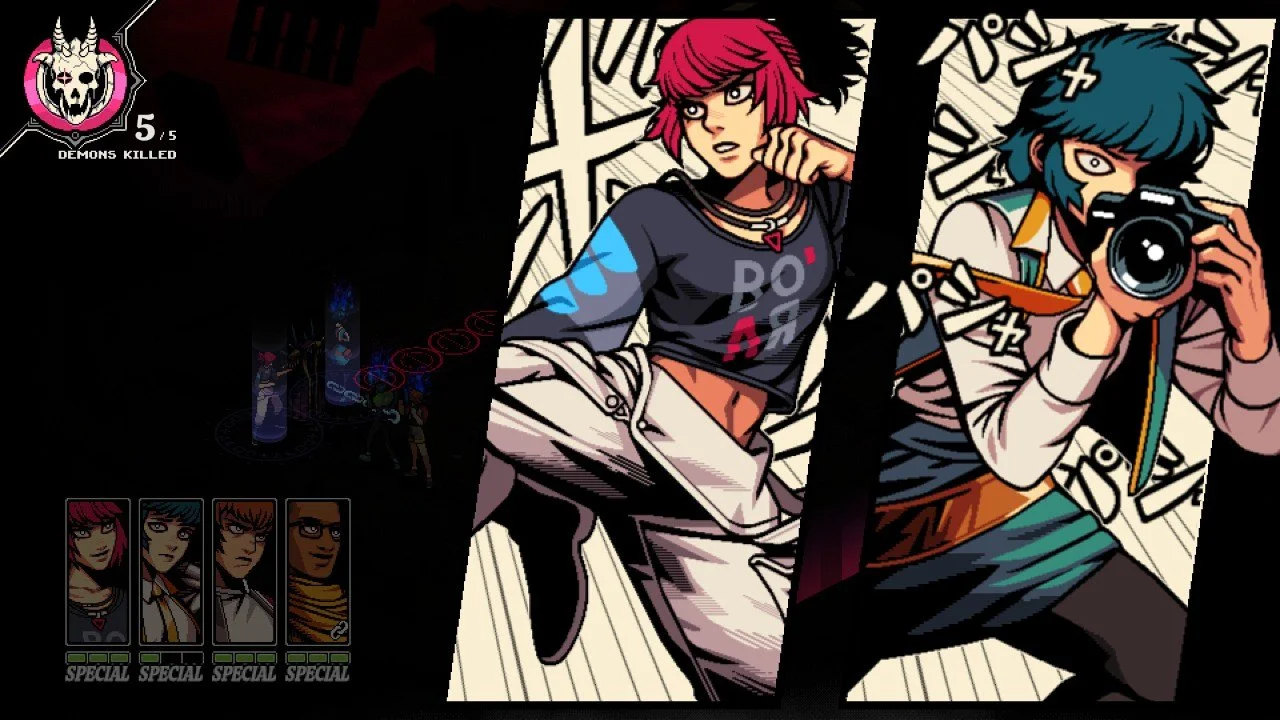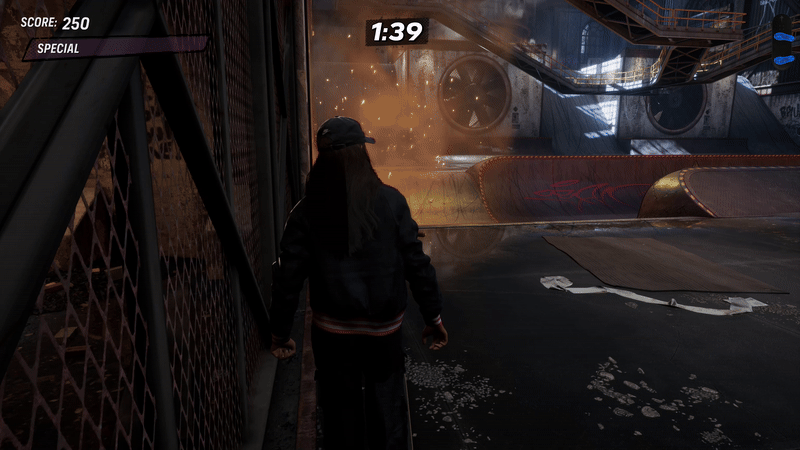Reviewed on Xbox Game Pass
Games created with the express purpose of paying homage to other games often box themselves in by their very nature. They rarely surpass the title they’re emulating, and they’ll often spend their existence being unfavorably compared to the original thing. While they might still be excellent games in their own right, they often languish in the shadow of their own inspiration. And then there’s Tunic.
Tunic, the long-awaited, adventure game from Andrew Shouldice and Finji, refutes everything about the games-as-homage subgenre. It subtly honors the titles that came before it while boldly pushing forward in inventive and exhilarating ways. The game doesn’t waste a single moment of its runtime, and breathlessly invites players along on a journey that will, without fail, alter how they view video games forever.
Story
Tunic’s story is one of the most remarkable I’ve encountered in any entertainment medium, let alone video games. It might be easiest to compare the storytelling in this game to that of FromSoftware, the legendary Japanese developer behind Dark Souls and Elden Ring. Everything about Tunic’s story is opaque, but players who take the time to learn it will discover a tale that is simultaneously beautiful and tragic.
It’s hard to get into too many details about the story without spoiling one of the game’s greatest mysteries, but suffice to say that every interaction, mechanic, and enemy has a role to play in the tale of this intrepid, young fox. There’s a deep melancholy at the heart of the island the game takes place on, and it comes through in every aspect of Tunic’s design. The music, the environments, and the way in which it slowly introduces new systems to the player all work together to reveal a larger picture that was always there, just out of focus.
Tunic opens with the titular character awakening on the shore of a strange and mystical island, much like Link does in The Legend of Zelda: Link’s Awakening. The one, major difference is that there’s no clear reason for how Tunic arrived on the island or why the island is significant. These details emerge over time, slowly unraveling as players interact with more and more of the world around them.
Dying reveals the trapped soul of a tall, graceful fox spirit who seemingly implores Tunic to free her from her prison. Doing so requires dispatching three, powerful bosses located around the island, and they each have their own story to tell and their own role in the broader narrative. Not all is as it seems, though, and players expecting an abrupt ending are in for a profound and delightful surprise.
There’s an incredible amount of lore to unlock, and taking the time to dig into all the nuances of Tunic’s story offers both compelling, in-game rewards and the satisfaction of uncovering yet another of the game’s many mysteries. There’s even a set of secret objectives that, when completed, unlock the game’s true ending.
Gameplay
Tunic is a deceptively simple game that continues to reveal new mechanics long after what can be considered the tutorial has ended. While this might be a tiring quality in other games, Tunic introduces each new system in a way that left me shaking with anticipation, because each new weapon, item, and ability adds new utility to exploration. As a result, the game never slips into a lull.
Discovering a new path or figuring out how to open a specific door was always exhilarating, the kind of serotonin boost you get when solving a complex math problem or finally understanding the ending to Lost. Tunic’s intricate world design is a masterclass in level creation that frequently left my jaw on the floor. Shortcuts abound, and seemingly innocuous areas would later reveal themselves to be integral to the entire experience.
The most reliable method for discovering Tunic’s secrets is the guidebook, a helpful pamphlet that has had its pages scattered across the realm. Each page details new information about the game, albeit mostly in picture form. But these pages don’t unlock or activate anything in the world; it was all available from the start. If a player is discerning enough, they can find late-game secrets after playing for only a few hours.
While the majority of the game balances itself between combat encounters and puzzle-solving, a lengthy, optional sequence toward the end of the game is just one long puzzle that spans the entire game world. Environments I’d passed through hours earlier suddenly took on an entirely new context, and I spent hours combing through each region to divine every one of Tunic’s secrets.
Tunic’s combat offers thrilling challenges that require players to learn how enemies move and attack in order to take them down. A sword and shield are Tunic’s standard armaments, allowing the bold fox to take down enemies with impunity. While the sword dishes out a fairly standard, three-strike combo, the shield has a hidden talent that allows players to parry enemy strikes, leaving them stunned and vulnerable to extra damage.
There are also magic weapons that have a variety of different effects in combat, whether that be hitting enemies from a distance, freezing them solid, or pulling them in close. What’s remarkable about each of these weapons is how they can be used in ways the game never explicitly states: the fire staff can light torches and activate switches from a distance, the magic orb can pull Tunic to anchored hooks and frozen enemies, and the magic dagger can be combined with the fire staff to shoot an ice spell that freezes enemies at range.
Thrown weapons like firecrackers and ice bombs add an additional wrinkle to the game’s combat, often coming in handy against large groups of enemies or powerful bosses. There are other consumables, as well, like spicy peppers and herb sprigs that can temporarily enhance Tunic’s power and stamina during battle.
There are even special abilities that alter some of Tunic’s base properties, such as transforming the health potions into magic restoring draughts, or dramatically increasing his attack power at the cost of all his health. One ability even increases the window for players to parry enemy attacks, an incredibly useful buff that makes certain enemies much easier to defeat.
Audio and Visual
If the story and gameplay weren’t enough to cement this game as one of the best of the year, its art design certainly does so. Tunic is an auditory marvel that makes the most of its powerful, atmospheric score. Each region boasts a unique musical arrangement that suits the environmental design in a way that’s almost impossible to describe.
The music enhances everything around you, bringing even the simplest of locales to life in a new way. Whether you're strolling along the green pathways of the Overworld or in a pitched battle against the terrifying Librarian, the soundtrack at your back always meets the moment with incredible instrumentals and emotional harmonies.
On the visual side, Shouldice opted for a charming, toy-like aesthetic that belies the game’s darker motifs. The juxtaposition of these adorable creatures with the tragic and, at times, scary narrative beats allows Tunic to subvert the player’s expectations in shocking ways. Many of the game’s later locations and narrative beats are heightened by this dichotomy.
Verdict
Tunic is an incredible accomplishment, and everyone involved in its development should be incredibly proud of the game they’ve made. It is at once a puzzle game, an adventure game, and a beautiful piece of art that manages to recognize its influences while crafting its own, unique identity. Everything from the puzzles to the combat to the deeply emotional story was flawlessly constructed to work in tandem, and I enjoyed every single moment I spent experiencing it all. Tunic is, in a word, a masterpiece.
